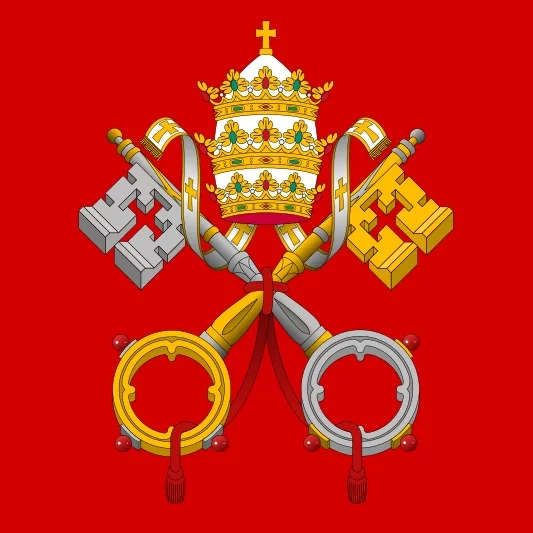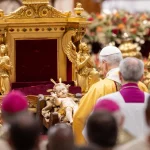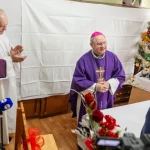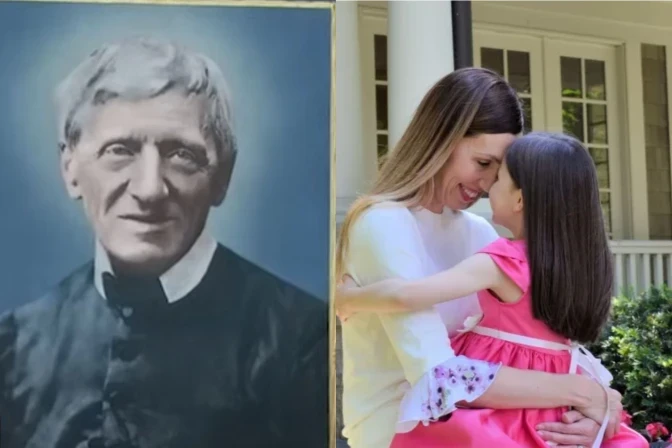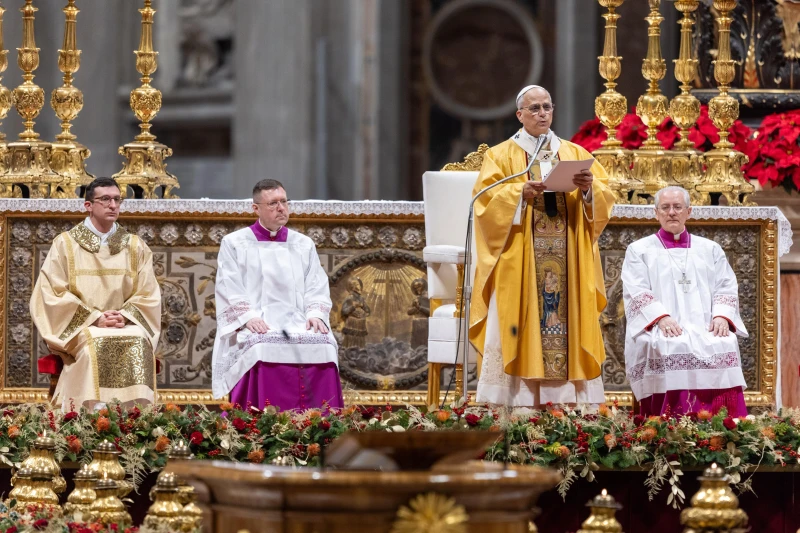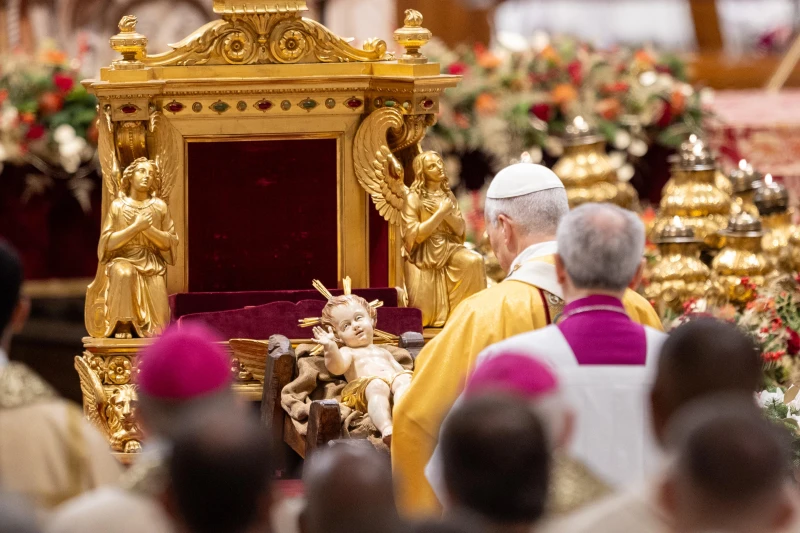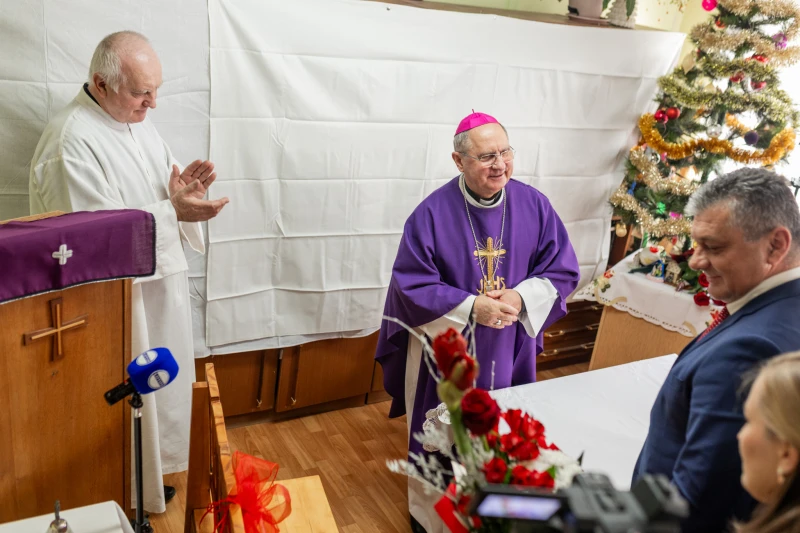
Melissa Villalobos suffered severe bleeding while pregnant. St. John Henry Newman interceded and saved her and her daughter Gemma, now 11 years old. / Credit: Photo courtesy of the Villalobos family
ACI Prensa Staff, Oct 31, 2025 / 10:00 am (CNA).
The sainthood of John Henry Newman, who will be declared a doctor of the Church on Nov. 1, rested on two inexplicable healings that the Catholic Church officially recognized as miracles that paved the way for his beatification in 2010 and his canonization in 2019.
The second and most recent of these miracles was lifesaving. During her fifth pregnancy, Melissa Villalobos, a lawyer from Chicago, suffered severe internal bleeding caused by a partial placental abruption, a condition that seriously endangered both her life and that of her unborn child.
The day it happened, Villalobos, alone at home and without the strength to call for help, turned to prayer. “Please, Cardinal Newman, stop the bleeding,” she said with difficulty. As she later recounted: “Just as I finished those words, the bleeding stopped, and I noticed in the bathroom the strongest scent of roses in my life. When it stopped, I asked, ‘Cardinal Newman, did you do this?’ and the scent returned a second time. I knew it was him.”

That same afternoon, the doctors confirmed what they could not explain: The tear in the placenta had disappeared. Months later, Villalobos gave birth to a perfectly healthy baby girl, whom she named Gemma.
Five years later, Gemma and her entire family participated in the canonization ceremony for Newman officiated by Pope Francis in St. Peter’s Square on Oct. 13, 2019.
For Sister Kathleen Dietz, FSO, a renowned specialist on St. John Henry Newman, the healing of the pregnant woman should be seen as a “sign of the times” when “the culture of death permeates everything.”
“He performed this miracle for the sake of life, not only the life of the young mother but also that of her child. It’s very significant,” she told ACI Prensa, CNA’s Spanish-language news partner.
Unexplained healing of a debilitating spinal disorder
The first miracle attributed to Newman’s intercession was on behalf of American deacon Jack Sullivan, who was suffering from a severe degenerative spinal cord disease that had left him almost paralyzed.
In great pain and with little hope of recovery, he prayed for Newman’s intercession. According to his own testimony, on Aug. 15, 2001, he experienced a sudden and complete recovery, which allowed him to walk unaided and shortly afterward to be ordained a permanent deacon.
The Congregation for the Causes of Saints officially recognized the healing as scientifically inexplicable, and on July 3, 2009, Pope Benedict XVI officially announced that it constituted a genuine miracle. It led to Newman’s beatification on Sept. 19, 2010, in Birmingham, England, the city where the saint lived for much of his ministry.

Sullivan served as deacon and read the Gospel at the Mass celebrated by Benedict in Rednal, England, very near Newman’s burial site.
Sullivan, who has the only first-class relic of Newman outside the Oratory of St. Philip Neri in England, has given numerous presentations with it and has held healing prayer services.
Dietz — who has collaborated on various studies on the spirituality and legacy of St. John Henry Newman — emphasized that miracles authenticate Newman’s holiness and reflect his ongoing mission within the Church.
“Miracles show that Newman continues to have a role as an example and intercessor. He will soon be named a doctor of the Church and thus will also be a teacher of truth,” she noted.
Inspiration for daily life
For the religious, Newman can inspire the faithful in their daily lives with a faith “lived in everyday circumstances.”
Dietz cited Newman’s 1856 work “A Short Road to Perfection” in which he points out that to be saints, “we need nothing more than to fulfill the ordinary duties of the day well.”
“It’s not a matter of heroic or extraordinary feats but of performing the actions of each day with rectitude and consistency: getting up on time, dedicating one’s first thoughts to God, visiting the Blessed Sacrament, praying the Angelus and the rosary, keeping one’s thoughts in order, examining oneself daily, and going to bed at a reasonable hour. If this is done consistently, one is already on the path to perfection,” the saint counseled.
Joy: An essential Christian virtue
Dietz emphasized that Newman saw joy as an essential Christian virtue, even in the midst of sadness, and that his example can guide believers to live their faith in a “practical, tangible, and consistent” way in daily life.
For Dietz, Newman’s life and miracles remind us that holiness is not an unattainable ideal but a “reality accessible to all” through faithfulness to small daily acts and trust in God’s providence.
“His teaching combines theological depth with pastoral application, showing how a saint can be a model and guide for the contemporary Church and for every believer in their daily life,” she explained.
This story was first published by ACI Prensa, CNA’s Spanish-language news partner. It has been translated and adapted by CNA.
